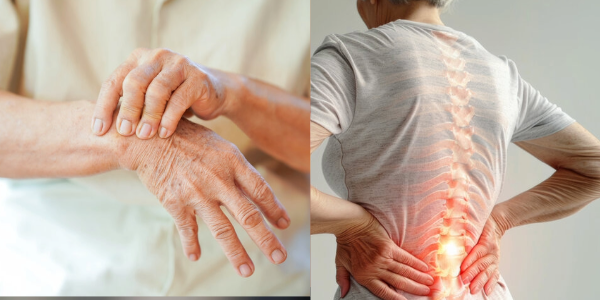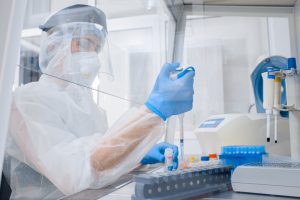Researchers used machine learning analysis tools and algorithms to identify two genes associated with rheumatoid arthritis and osteoporosis that could serve as diagnostic tools and potential targets for treatments. From a large database of genetic information, they collected dozens of sequenced genomes from people with rheumatoid arthritis and osteoporosis to look for commonalities, using newly developed computer-based methods to narrow their search. They identified the genes ATXN2L and MMP14 as significantly associated with the progression of both rheumatoid arthritis and osteoporosis.
How Rheumatoid Arthritis and Osteoporosis are Related
Rheumatoid arthritis is a common disease that affects an estimated 17 million people worldwide. The disease is caused by immune cells that attack the joints and can lead to pain, swelling, and damage to cartilage and bones. People with the disease often develop osteoporosis, a more serious condition caused by the bone damage caused by immune cells and as a side effect of certain medications. In APL Bioengineering, a publication of AIP Publishing, researchers from Da-Chien General Hospital, China Medical University, and Chang Gung University used machine learning analysis tools and algorithms to identify two genes associated with rheumatoid arthritis and osteoporosis that could serve as diagnostic tools and potential targets for treatments.
Both diseases focus on one of the most important mechanisms that keep the rest of the body in check. Apoptosis, or programmed cell death, is a crucial tool that immune cells use to remove defective or no longer needed cells. However, malfunctions can cause immune cells to mistakenly attack cells at random, often with disastrous consequences. “In rheumatoid arthritis, excessive apoptosis of bone-forming cells contributes to joint destruction and inflammation,” explains author Hao-Ju Lo. “The same process also leads to bone weakening in osteoporosis, underscoring the need for simultaneous treatment of both diseases.” Given this central role, the researchers set out to find genes involved in apoptosis that are closely associated with both diseases. From a large database of genetic information, they collected dozens of sequenced genomes from people with rheumatoid arthritis and osteoporosis to look for commonalities. Sifting through this vast amount of genetic data was no easy task, so they turned to newly developed computer-based methods to narrow their search.
Developing New Treatment Options for Patients Suffering from Both Diseases
The researchers used bioinformatics tools to analyze large gene datasets, focusing on genes that are active in rheumatoid arthritis and osteoporosis,” said Lo. “We applied machine learning techniques such as Lasso and Random Forest to refine our search and identified two key genes—ATXN2L and MMP14—that play an important role in both diseases.” According to their analysis, these two genes are significantly associated with the progression of both rheumatoid arthritis and osteoporosis. ATXN2L plays a role in regulating processes such as apoptosis, so malfunctions in this gene are likely to trigger both rheumatoid arthritis and osteoporosis. MMP14 contributes to the formation of extracellular tissue such as cartilage and may be responsible for the breakdown of joint tissue that leads to rheumatoid arthritis. The analysis showed that these genes are involved in immune regulation and bone metabolism, suggesting that they could be useful markers for the diagnosis or treatment of rheumatoid arthritis and osteoporosis.
With the identification of two potential targets, the authors hope to use these findings as a starting point for developing new treatment options for patients suffering from these two related diseases. The researchers plan to validate these findings through experimental studies and investigate how targeting these genes could improve treatment outcomes. This research could also include the development of personalized therapies that use AI and machine learning to predict which patients are at highest risk for osteoporosis.






